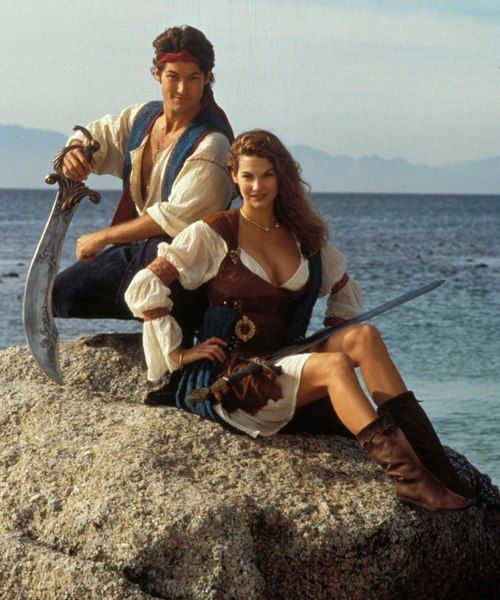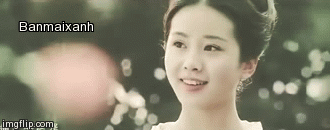|
|
Post by tzigone on Feb 22, 2015 20:14:47 GMT -5
Obviously, there are some things that appear in the show that are centuries too early - tomatoes, peanuts, silvered glass mirrors, Bushido, etc. And the entire culture, their races..this was not a show concerned about historical accuracy (I wouldn't have liked the show if it was accurate, anyway). But I still want to establish - in my own head - a timeframe for the show. I never thought about it when I watched the show back when it originally aired. When I watched this time, I just went to Wikipedia and looked up Sinbad. Saw the oldest one we had was explicitly set during the reign of someone who ruled in the late eight and early ninth centuries. Then I started looking up details about that time period (particularly in Ireland, as I was thinking of doing something with Maeve's parents). Then I started seeing "fifth century" all around the fandom. Did that come from an interview? That's really jaw-dropping to me.
Baghdad wasn't founded until the eighth century (and Basra the seventh). The Caliphate didn't exist until the seventh century. And very, very importantly, Muhammad wasn't born until the late sixth century. If the show is indeed set in the fifth century, they absolutely cannot be Muslims. Well, actually, they can, because I'm thinking about fanfic and the show didn't care about history either. But I can't write it that way. It's just too far for me to go. It's like Christians in the 2nd century B.C.
Actually, for me, none of the characters can be monotheists. They have no problem with the wind gods existing. Only Firouz expressed doubt on Poseidon. They all believed in the Old Ones who were explicitly called gods. I don't know much about it, but I looked it up in Wikipedia and in pre-Islamic Arabian myth, Allah was a creator god (Muhammad's father's name translated as "slave of Allah") and Allah was sworn by even then. From what I read, even in 900 AD, both Iraq and Iran were only about 50% Islamic (more in the cities, though). If it's the eighth century then all of Ireland was nominally Christian. But if Maeve was raised that way, she didn't keep to it. I'm not sure I think she was, though, since she says "by the Gods." Not one of them, when presented with another god, has said "hey, there's only one God/Allah." Scratch says he's pretty much taken over the West - but what qualifies at the "the West"? Anglo-Saxon England didn't start Christianizing until about the seventh century and Scandinavia was later. Maybe he just meant the places like Constantinople and Rome and so on.
Since we've so little on her backstory, I've been trying to come up with one that suits me. Right now, if eight/ninth century (I decided she left before 795, because that's when viking era started, and she doesn't seem familiar with vikings), then I was thinking that she was the daughter of a metal-worker (seriously, did you see how many buckles, brooches and pins she was wearing?!) because it gives the potential for some wealth (necessary for all the pins she has) but keeps her out of nobility, which is my wish. The rich would have bronze, too. Silver was rare and gold very, very rare. I'd put her in a monastic town (or a pre-cursor to one) because those were the only actual town-like-settlements in Ireland, so far as I can tell (and they were typically small-town sized). Other than that, it was just rural. Money was not used. It was a barter economy; I think they were transitioning away from a cattle economy at the time, but am not sure. I picked a settlement because that would be much easier for me to write with than raths, if I ever write anything.
Fifth century has the ease of less Christianity, which suits Maeve's attitude better, I think. As far I can tell, there were no towns in Ireland in that time frame, though - they may have appeared at the end of the fifth century. Completely rural. I haven't really been able to find out much about daily life or social gatherings or the like for the time and place. I really don't know why Rumina was hanging out in that backwater. I might give her a magical artifact to be after.
I was actually thinking that no matter which century it was set in, I might like Caipra to be Zoroastrian. I thought the dualism (good v. evil with the evil not be subordinate to/created by the good) of Zoroastrianism suited Dim-Dim's talk of the coming battle and that the Zoroastrian big bad, Angra Mainyu, might be a good captor for Dim-Dim. And he exists along with the devil and Poseidon and so on. But it was a popular religion in the region (or at least in Iran) before Islam, and the peacock is the symbol of luck (I think), and Caipra had a peacock motif to her outfit when she stopped Rumina. That's more into fanfic material, though.
As you might have figured out, it's more important for me to know the timeframe so that I can figure out a barebones of what I want for Maeve's backstory. I've seen the world Sinbad and Doubar and Firouz seem to have grown up in/come from on the show. Regardless of whether such a world ever actually existed, I have a canon for their environment. I need to develop a fanon for Maeve's.
So, I guess my issue is I have to decide whether to treat Baghdad, Basrah, and the Caliph as names/titles put in for flavor that hold no historical meaning (Sultan and Pasha were also used the show and were much later terms) and as something the audience would have familiarity with and just use fifth century or go the other route and use some time post-Baghdad-founding as my time frame. Then I have to decide what to do regarding Maeve and her obvious non-Christianity despite her entire region being nominally Christian.
So, if I've got anything wrong, please correct me; I don't mind. I'd love to hear arguments for or against either placement. If you have a third timeframe in mind, then chime in. I'd love to hear how others decided what time or background to give the the characters - in fanfic or just in their heads.
|
|
|
|
Post by Sinbad on Feb 23, 2015 9:59:50 GMT -5
First of all, welcome again to the board.  I would agree with you that the show was never out for historical accuracy, especially since they never went into the detail of e.g. not having people on the markets sell potatoes and tomatoes and other New World crop. I have actually never established a true time frame for myself but I think I´d place it somewhere 10th century, definitely deep into the middle ages. Firouz inventions (as you mentioned in the other thread) never advance to a point that makes it look too early Modern Age and there is never any mentioning of travelers that went any further than the surrounding seas which means we can quite surely rule out the age of explorers and early modern age, say 15th or 16th century. Completely agree here. I, too, never really saw any real detail put to the depiction of any religion (strictly speaking) in the show, at least not for the main characters. I can subscribe the “wind gods” and other things to the general superstition of sailors (e.g. when thinking about the bunch of mostly not even sailors that Columbus lumped together who were highly supersticious, fearling sea monsters and evil spirits and the water cooking near the equator...). But apart from that, I never see any real proof for any of the main characters being monotheistic. When I write Sinbad or when I used to write fanfics, I have often found it more accurate to have Sinbar exclaim something into that direction such as “by the Gods”, it felt more natural with the flow of the show for me, simply because the show never seemed to put much of an effort into depicting religions in a historically accurate way and therefore more created a mythological / fantastical kind of background and feel to the showt hat sort of goes better with the mythologies of antiquity than the emerging and flourishing monotheisms of the Middle Ages and Early Modern Age. Not my area of expertise, but maybe someone else will comment on this. We have people on here that know far more in that respect.  I´ve always seen Maeve and Dim Dim sort of as representatives of “the old way” as maybe Marion Zimmer Bradley would put it. Christianity has spread in Ireland at the time already, but conclaves remain where the old ways and traditions are practiced, which might even explain why Maeve has to do some travels etc. to get together with Dim Dim / why her magic skills need to be trained by an assigned mentor. Maybe the training of skills like her´s is no longer common or even a forbidden art. Since witch burnings and the inquisition were not a thing really until early modern age (despite what pop culture and Hollywood and “historical novels” sometimes like to depict) I´d say she might night be getting into trouble for this usually, but maybe it might make her some sort of a minority, even an outcast among her people. Also, she is referred to as a “celt” several times throughout the show. The Celts of course is a rather generic term, bundling a lot of different tribes and traditions. It would also to some extent fit with the “old ways” sort of things. Since I´d see Scratch as sort of a representation of the Christian devil (if one can even go that far), that would again fit with the 10th century theory, seeing that Christianisation was a gradual process. I´d also guess “the west” refers to the occident as such, in contrast to the orient. Rumina seems like an oddity there, she certainly doesn´t fit into the 10th century theory but if we place it earlier, way too many other things don´t fit, so i´ll rather see her as the odd one out.  Caliph and Sultan does not hold any historical significance for me in the show either. It doesn´t make sense. There is too much time between caliphates and sultans in actual history. Summing it all up I´d say this is basically a Disneyfied and therefore simplified version of “exotic places and adventures” in a way which leads to big inaccuracies. It´s impossible to create a time frame that fits a hundred percent but I´d say early to high Middle Ages feels most comfortable and closes most loopholes. |
|
|
|
Post by MJ on Feb 23, 2015 11:47:17 GMT -5
Interesting topic! I did hear fifth century somewhere and assumed it was true, but I guess I should have checked.
So I took out my trusty volumes of 1001 nights. The trouble with pinpointing the time-frame is that the story originated in an oral tradition. The oldest written fragments of 1001 nights date from 8th or 9th century. The oldest stories can be traced back to India, but there are also Greek and Persian stories. So not only it the WHEN hard to pin down, the WHERE is inconsistent as well. The stories have always changed with time and location, there is no one version of 1001nights that is the definitive one.
A lot of the 18th,19th and 20th century translations of 1001 nights have been altered to suit European tastes of the times (for example, all the eroticism was left out)
That said, my edition of 1001 nights features christian knights (as bad guys) which would point to 11/12th century (crusades). However, the caliph in a lot of the stories is Harun al-Rashid, who reigned from 786-809 according to wikipedia. That last would also explain Firouz, as scientific discovery was very much encouraged.
So basically, the source material doesn't know what time it is living in either. (As a side note: well-educated, beautiful women were prized, and wicked witches did trick honest heroes, so Rumina is not a stretch at all.) In the source material the heroes did tend to be devout muslims, even as they encountered magical creatures like Djin and Ifrit. So to them it could stand side by side.
As for Maeve's background: She makes no historical sense at all. Like At All. That she can read would point to her being brought up in the Christian tradition as at least they had books whereas the druid-types did not. Not that anyone but clergy was allowed to read the book but... let's just assume Dim-Dim taught her how to read. Then there's the sword-fighting and sword-ownership. I can't think of a time in Ireland where women were encouraged to take up sword-fighting. And Dim-Dim is no swordsman himself, so he can't have taught her. Is she even supposed to be Irish? The short-lived accent was pretty unconvincing, maybe it was supposed to be Scottish? That would explain why Doubar calls her lass.
As for her clothes, I don't think they are her own. Mainly because: who in their right mind would set out on a long journey dressed like that? Especially as a woman, in medieval times. I'm also suspecting they're a very large man's clothes (really long vest, really long linnen shirt the sleeves of which have to be held up by armbands and the bottom of which has been cut off to make shorts, and a too large belt, the torque is generally a man's as well- she's just missing the pants).
Maeve doesn't seem to have any religious beliefs, which is odd in and of itself.
So yeah, historical accuracy is not AoS's watchword (the women wear underwires and shave their pitts and legs for crying out loud). But I would put it in Haroun al-Rashid's time. For no other reason then Baghdad was a flourishing city at that time and it fits with 1001 nights.
|
|
|
|
Post by tzigone on Feb 23, 2015 11:51:56 GMT -5
I get where you're coming from. I'm wary of changing the phrases used by the characters, myself, though. And, as an atheist who uses "God" in expressions and might even say "bless you" when someone sneezes, I don't put a lot of stock in that necessarily indicating the religious beliefs of the speaker. Rather that it's just indicative of the environment they live in or grew up in. Dim Dim, yes. For me, Maeve was definitely not raised in magic. Or at least, not raised in doing magic. I'll comment on this more in the episode threads, but she very frequently goes to the sword first. Even in the season finale, she's using a sword and Sinbad has to tell her to use magic instead. It's not instinctive to her. To me, she's new to magic. Maybe not to the reality of magic (as it seems to be very common in this universe, and could likely exist side-by-side with any religion). I don't think she sought out training at all until after Dermott was cursed, but that's a rather baseless belief since we know nothing of her life before. I guess I was just thinking of her as someone with magical potential, but that it was never realized before because she was in a sparsely populated area with no other magic-doers to train her. I did know that. You know, my sister was trying to find Irish-Christian attitudes on the matter and found a reference to a (not Irish) penitential that said this Really, there are some that just seem wildly out of proportion and they varied from book to book. Meanwhile a woman who does a certain non-procreative intimate act with her husband gets to do penance on appointed fast days for seven years. I just don't think I can get into the medieval mindset. Fortunately, this show doesn't require me to do so.  So true. I think I'm still leaning a bit earlier, but I'll research this time period further. |
|
|
|
Post by tzigone on Feb 23, 2015 12:17:40 GMT -5
Well, Muslims believe in jinn even today (they're in the Quran). They're not gods, but like demons (which many Christians believe in). You know I just found out recently (from the Wikipedia page) that in the Fourth Voyage, Sinbad bludgeons to death many innocent people to steal their food (he'd have starved otherwise, at least the first time) and takes the gold from their dead spouses. I'm really glad this show didn't stick to the source material.
I can't say for the accent, but she did reference the Blarney Stone (in "Double Trouble"), and that's Irish. But some legends say it was in Scotland a while before being taken back to Ireland (in the 14th century).
For me they are definitely her own. Insane to wear, but lots of the women wear insane-to-wear things. It's too fitted to be man's clothing. There's no bunching, etc. The linen works better for me to be a woman's shift cut short.
I thought women shaving (or close-trimming and ash for burning or some other body-hair removal) was common in the region (though not in Europe) at the time? And I'm not just talking legs and pits here. You're completely right about the clothes, though. I know it was body-hair done later in the medieval period by Muslims, but I thought the custom predated the religion.
Edit: I did find some references to Celtic women in battle, but that was against the Romans, so the time period is off, and that wouldn't have been in Ireland.
|
|
|
|
Post by banmaixanh on Feb 23, 2015 12:43:54 GMT -5
I think it's very tough to find out exactly which century the show base on. There is only 1 tiny detail in the show that makes me believe it should be in 15th century. It is the 2nd or 3rd ep of season 2 when Firouz bought a pottery, the merchant said it was Ming pottery. I don't know if it's the problem of the dubbing or really the merchant said that but according to the history, Ming dynasty only appeared since 15th century.
About Maeve, she is the special female character but she seems to have a very simple explanation about her past so it makes things become not understandable. I agree that if she simply is just a daughter of a poor farmer, it's very hard to explain her fighting skill. I don't question about her reading ability because I don't know anything about the rules of western society in the old days. However, it's not like all people follow the rules, and not that all families put the limit on their daughters. It can be easily seen in Vietnam history. Women weren't allowed to learn how to read, weren't allowed to go to school but still we have a lot of talent women in our history as they were taught by their fathers. I think there are always some exceptions even the rules don't allow. So we can still assume that Maeve was born in that family. The only thing we need to correct if we accept this theory is changing the story of Maeve's past because there is no father who loves his daughter enough to let her live as she wants to will ever force her to any marriage just because of some pigs and land.
|
|
|
|
Post by tzigone on Feb 23, 2015 13:46:33 GMT -5
I think it's very tough to find out exactly which century the show base on. There is only 1 tiny detail in the show that makes me believe it should be in 15th century. It is the 2nd or 3rd ep of season 2 when Firouz bought a pottery, the merchant said it was Ming pottery. I don't know if it's the problem of the dubbing or really the merchant said that but according to the history, Ming dynasty only appeared since 15th century. But compasses and gunpowder wouldn't be new inventions of Firouz then. And the Mongols would be ruling Baghdad. I know, I know, we have to pick and choose the bits we like to set the setting we want, since the whole doesn't work. But I keep trying to pin it down to a decade, anyway. I think before or during (probably during) the Islamic Golden age. Makes Baghdad a prestigious place for Turok and Rumina to take over. For more fun: Serendip's mirror (if it's just silvered glass with no mercury or anything) shouldn't exist until the 19th century. The silvered glass mirror is credited to a German in 1835. |
|
|
|
Post by MJ on Feb 23, 2015 15:42:52 GMT -5
Wow, I am loving the depth of knowledge you have tzigone! (And you too Sinbad, but hopefully you knew that already). The shaving thing just blew my mind. I thought that was a modern thing. Now don't tell me they also had french-manicures in Ye Olden Dayes.
Another fun fact: Dim-Dim's rose garden is full of the not yet existing roses (from memory I think they're tea roses, but I am not an expert). They should have been Gallica or Damask roses.
I just can't think of a reason to wear that though. Historically speaking, if her clothes were from home they would've been wool and maybe animal skins and she would be wearing something akin to a knee-length tunic. (Again, my source is wikipedia, I don't actually know anything, but am enjoying this thread very much!)
|
|
|
|
Post by Sinbad on Feb 23, 2015 16:40:26 GMT -5
So...do I get this right and this means killing your husbands with...interestingly made bread just gets you a few days of prison. hah. That´s interesting ;D
Btw, love the discussion. Reading along for now though, since I´m in the middle of setting up some exams, but still.
|
|
|
|
Post by tzigone on Feb 23, 2015 18:44:58 GMT -5
I didn't see anything about animal skins (I'm assuming you don't mean tanned leather), but most of my looking was to a later time-frame than the fifth century they gave us. For the earlier time-frame, I did see the wool tunic you mentioned, but men wore the same as women (women's tunics were longer I think) except the wealthier might wear loose trousers (brais) underneath. I don't think we know very much about pre-Christian-era Irish clothing. The Cattle Raid of Cooley (which is ninth century and a bit later than what I'm looking for) describes describes some clothes - 8 soldiers in silk shirts, most of the 37 soldiers described have shirts of some kind. Now, it's not historically accurate to the time it's describing (1st century). And the wealth far beyond realism. But the clothing descriptions do indicate that by the ninth century those that could afford it wore fine/not-coarse garments next to the skin (silk for the rich, linen, etc.) I think I read "linen" (leine) was a more versatile term at the time and could refer to garments made from hemp instead of just from flax. My understanding is that by the viking era (which starts during the reign of the Caliph that Sinbad is set in in our earliest copy, and is the time-frame I was looking at), linen tunics/leines were common with wool cloaks (brats). I do think Maeve in a guy's linen shirt could be done in this context (they could be mid-thigh or mid-calf or between) as easily as a woman's cut down, since I don't think there was much difference in how they were made. I still don't think the leather part works as a man's vest - but I think it's probably too fitted (despite the wide-wrap-around-belt-girdle thing, it seems to be a fitted garment to me as there is no excess fabric or bunching) to fit in anywhere in the relevant time period. Reality must bow before an audience's expectations/desires. Unfortunately, I'm just Googling for this info. I can't promise you that it's accurate. In case anyone cares, there are some nice brooches and pins shown here even when you don't look at Viking material and later. There was some fine metalwork in Ireland at the time. Though the finest work would belong to the richest, of course. Iron was most common. Pins and brooches were used as fastenings for cloaks, etc. Bronze was the metal for the wealthier. Silver was rarer. I think from the examples we have, we've never seen gold except as gilt and accent. I can't think of any reason Maeve would steal decorative brooches (and not sell them for more useful things), so I'm presuming she came from some money (or no one thought of how valuable those things were when doing costuming, but that's the boring explanation). Not even prison. Just penance. I'm unfamiliar enough with the terminology to know if that means just the fasting (bread and water only) or if it means the bread and water diet plus praying and going without linen clothing (unpleasant itchiness) and so on. EDIT: Right now I'm thinking about 786 for a year. Sure, plenty of things don't fit, but that happens no matter what. This gives me 10 years before the Viking raids/Viking era in Ireland (nice because Maeve doesn't know about them) and Baghdad is still the capital for another 10 years. And I can have a town for her to come from. Also, my sister just told me that the Irish laws (Law of the Couples) from around 700 talk about how property is divided in case of divorce (which was pretty common, I think) and it talks about how spun linen and linen fabric (and raw wool and woven wool and cheese and so on) should be divided. So linen was present then. |
|
|
|
Post by banmaixanh on Feb 24, 2015 0:08:22 GMT -5
I think it's very tough to find out exactly which century the show base on. There is only 1 tiny detail in the show that makes me believe it should be in 15th century. It is the 2nd or 3rd ep of season 2 when Firouz bought a pottery, the merchant said it was Ming pottery. I don't know if it's the problem of the dubbing or really the merchant said that but according to the history, Ming dynasty only appeared since 15th century. And the Mongols would be ruling Baghdad. Mongol still ruled Baghdad until 15th century? I think the Mongol empire was collapsed in 14th already, wasn't it? Ming dynasty was the replacement of Mongol empire after it fell down in China in 14th century. As I know (not sure if it's correct), after being defeated in Vietnam in late 13th century and fell down in China in 14th century the Mongol empire started felling down in all over the world. This is just my question about the history. I agree that 15th century seems to be too modern for the show and the little detail about Ming can be just a mistake. |
|
|
|
Post by tzigone on Feb 24, 2015 7:02:07 GMT -5
Perhaps not - maybe I didn't read closely enough. I already knew about the Mongol sacking in 1258, and in Wikipedia skips right from the Abbasids to the Ottomans in section titles. But reading more closely, it looks like Baghdad was controlled by "Mongol Jalayirid (1400–1411), Turkic Kara Koyunlu (1411–1469), Turkic Ak Koyunlu (1469–1508), and the Iranian Safavid (1508–1534) dynasties" so the Mongols were out of there by in the very early 15th century. And I did notice before those were called a "Mongol breakaway state" instead of proper Mongol empire, but I thought they still qualified as Mongols. But that was after a Turkic sack, so I'm not really sure how to qualify it. But I'll admit to not knowing much about it, so maybe it was Turkic from 1401 on.
|
|
|
|
Post by manche on Feb 24, 2015 14:16:39 GMT -5
Hello, I welcome you here as well.
This is a very interesting topic. Although I am not an expert to history, I also think that the historic accuracy was not present in this TV series very much. There were mentioned some historical events or characters as the colonisation of Greece, Attila the Hun, the Vikings, the druids, The Silk Road and mainly The Ming dynasty, which would testify about 14th century. You mentioned some items which were not available in this period of time as tomatoes or peanuts, the most noticably this mirror of Serendib.
It looked that the origin of Maeve is from the Ireland, I am not sure in the terms of the others. The questions of the faith of the main characters were not addressed as well, there were some references of some Gods but not very many.
|
|
|
|
Post by tzigone on Feb 24, 2015 19:53:30 GMT -5
We've spent so much time on all the possible time-frames I just realized that I still don't know where "fifth century" came from. Does anyone else?
|
|
|
|
Post by Eleana on Feb 24, 2015 21:46:37 GMT -5
I always find odd how many pieces of jewellery Maeve wears. The necklace, the gold ring, the brooche,... in this promotional picture who was found by Kahlan and Kriss, she even have a gold bracelet (and another ring ?)!  She's supposed to be a peasant, no? It really don't make sense xD ! |
|










